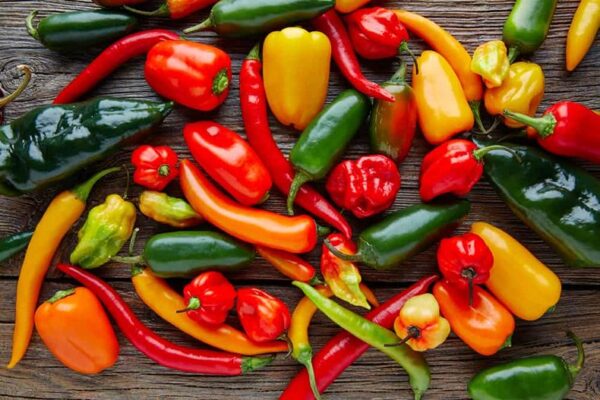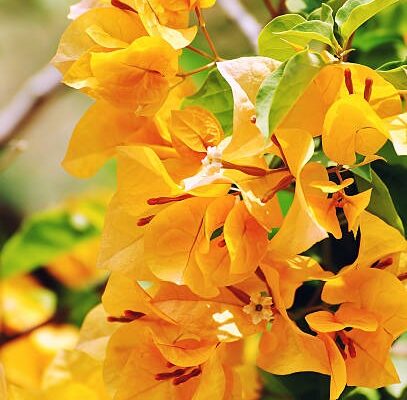How to Grow and Care for Asian Pear Tree
Learning how to grow and care for Asian Pear trees is essential for ensuring its healthy development and a bountiful harvest. If you’re interested in cultivating Asian Pear trees, understanding the proper techniques for growth and care is crucial.
Asian pears, scientifically known as Pyrus pyrifolia, may not be familiar to you, but once you experience their delectable taste, you’ll undoubtedly desire to have your own tree to indulge in an abundance of this delightful fruit. These pears often referred to as “apple pears” due to their round shape and firmness akin to apples, offer a crisp and satisfying eating experience. For an enhanced flavor, refrigerating the fruit before consumption is recommended. Moreover, the unique texture of Asian pears makes them a delightful addition to salads and stir-fries.
In terms of cultivation, Asian pear trees share similar growing requirements with their European pear counterparts (P. communis). However, the advantage of Asian pears lies in the broader range of varieties that can thrive in regions with mild winters. Interestingly, Asian pears were historically known as “sand pears.”

Asian Pear Trees: Essential Care Guidelines
Optimal Growing Conditions
To ensure the thriving growth of Asian pear trees, it is crucial to provide them with a sunny location within your garden, preferably in deep, well-drained soil. The trees benefit from ample sunlight to support their development and fruit production.
Importance of Multiple Varieties
While a few Asian pear varieties are self-fruiting, planting two or more different selections will significantly enhance fruit yield. Cross-pollination between different varieties is key to maximizing the quantity and quality of the harvested fruit. It’s important to note that European pears cannot effectively pollinate Asian pears due to their differing bloom times.
Fire Blight and Resistance
Fire blight is a common issue that affects all pear trees. However, compared to their European counterparts, Asian pears tend to exhibit a higher resistance to this bacterial disease. If fire blight poses a problem in your area, selecting resistant Asian pear varieties is advisable to mitigate the risk.

1. Light Exposure
Positioning your Asian pear tree in a location that receives ample sunlight is crucial for its healthy growth and fruitful yield. Consider the following guidelines when selecting the ideal spot for your tree:
Sufficient Sun Exposure: Choose a sunny spot in your garden that receives a minimum of six to eight hours of direct sunlight each day. This ensures that your Asian pear tree receives the necessary light energy for photosynthesis and overall metabolic processes.
Observe Potential Obstructions: Before planting your tree, carefully evaluate whether any large trees or buildings could potentially obstruct sunlight. These obstructions can create shading, which may hinder the tree’s access to sunlight. It is essential to choose a location where the tree will have an unobstructed path to the sun throughout the day.
Spacing Considerations: For dwarf Asian pear trees provide at least 6 feet of space between the tree and surrounding plants. This generous spacing allows for optimal light exposure and proper air circulation, promoting healthy growth and reducing the risk of fungal diseases.
For full-sized Asian pear trees, allocate approximately 12 to 15 feet of space between the tree and neighboring plants. This wider spacing accommodates the larger canopy size of full-sized trees and ensures that all parts of the tree receive adequate sunlight for optimal photosynthesis and fruit development.

2. Soil Requirements
Deep, Well-Drained, and Fertile Soil: Asian pear trees thrive best in deep, well-drained soil that is rich in nutrients and has a loamy texture. While they can adapt to other soil types, providing them with the ideal growing medium is essential for their overall health and productivity.
Soil Testing and pH Level: Before planting your Asian pear tree, it is advisable to have your soil tested by the local extension office. This will help determine the soil’s pH level, with the optimal range for Asian pear trees being between 6.0 and 7.0. If your soil is too alkaline, the extension office can provide recommendations for suitable amendments to adjust the pH level accordingly.
Addressing Heavy Clay Soils: If your soil is heavy clay, it is beneficial to amend it with approximately one-third peat or coco fiber. This amendment improves drainage and prevents water logging, which can negatively impact the tree’s root health and overall growth.
Fertility Enhancement: In cases where the soil lacks fertility, annual fertilization can compensate for nutrient deficiencies. Applying a balanced fertilizer according to the recommended dosage can provide the necessary nutrients to support the tree’s growth and fruit production.
Avoid Wet Soil Conditions: It is crucial to avoid planting your Asian pear tree in areas where the soil remains consistently wet. Poor drainage can lead to root rot and other detrimental conditions. Ensure that the selected planting site has good drainage to prevent water accumulation.
Proper Planting Techniques: When planting your Asian pear tree, dig a hole slightly wider and deeper than the root ball, loosening the soil in the process. For bare-root dwarf trees, position the graft union 2 to 3 inches above the soil line to maintain the tree’s size. Standard-size trees can have the graft union at or slightly below the soil line. Potted trees can be planted at the same level as their nursery pots. It is essential to loosen or trim any circling roots to prevent girdling. Backfill the hole with the loosened soil and add a 3-4 inch layer of mulch around the tree, ensuring it does not come into contact with the trunk.

3. Watering Guidelines
Initial Watering and Establishment: When initially planting your Asian pear tree and during the establishment phase, it is essential to provide thorough watering. This ensures that the tree’s roots receive adequate moisture to promote successful rooting and early growth. Water the tree immediately after planting, saturating the soil around the rootball.
Weekly Watering Requirement: In general, Asian pear trees thrive when they receive approximately one inch of water per week. However, it’s crucial to check the soil moisture level before watering to avoid overwatering. Insert your finger or a moisture meter into the soil to determine if it is moist. If the soil feels adequately moist, watering can be skipped as the tree does not require additional water.
Watering Established Trees: As Asian pear trees mature and become more established, their watering needs may decrease. However, during dry spells or extended periods without rainfall, it is still important to provide supplemental watering to prevent drought stress. While larger, well-established trees require less frequent watering, monitor the soil moisture regularly to ensure it remains within the appropriate range for optimal growth.

4. Temperature and Humidity
Winter Hardiness and Chill Hours: Asian pear trees exhibit winter hardiness, making them suitable for cultivation in regions with milder winters, particularly throughout the southern parts of various countries. However, to ensure fruit production, Asian pears require a specific number of chill hours, which refers to the cumulative hours during winter when the temperature remains below 45 degrees Fahrenheit (7 degrees Celsius). It’s important to note that Asian pears are not suitable for tropical climates due to the lack of sufficient chill hours.
Zone Selection and Variety: When selecting an Asian pear variety for planting, consider the specific hardiness zones in your area. Some varieties can successfully fruit as far south as Zone 8, while others are better suited for Zone 9. It is advisable to choose a variety that is known for performing well in your specific hardiness zone to maximize fruit production and overall tree health.
Blossoming Timing and Cold Snaps: One key difference between Asian pears and European pears is their blooming time. Asian pears tend to bloom earlier in the spring, making them susceptible to potential damage from sudden cold snaps or frost events. To minimize the risk of losing flower buds, avoid planting your Asian pear tree at the bottom of a hill or in low-lying areas where cold air can accumulate and create frost pockets. Choosing a planting location with good air drainage helps reduce the chances of frost damage to the blossoms.
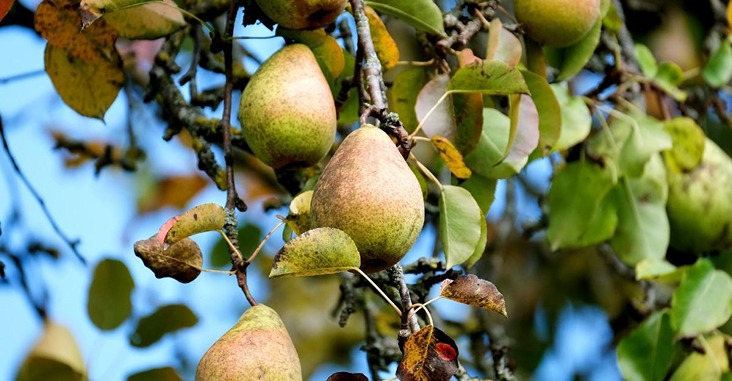
5. Fertilization
Soil Testing for Nutrient Balance: To ensure the appropriate balance of nutrients for your Asian pear trees, it is highly recommended to have your soil tested before applying any fertilizer. Soil testing provides valuable insights into the specific nutrient deficiencies or excesses present in your soil. This information allows you to tailor the fertilizer application to meet the specific needs of your trees.
Utilizing Compost and Mulch: If your soil is already fertile, incorporating a layer of compost and organic mulch can often provide sufficient nutrients for your Asian pear trees. Compost and mulch contribute to soil health by improving its structure, enhancing moisture retention, and slowly releasing essential nutrients over time. These organic amendments can support the tree’s growth and overall nutrient requirements.
Selective Fertilizer Application: In some cases, providing additional fertilizer to your Asian pear trees may be necessary. However, it is crucial to select a fertilizer that is appropriate for fruit-bearing trees and avoid excessive nitrogen levels. Excessive nitrogen can promote vigorous leafy green growth at the expense of flower and fruit production.
Timing and Frequency of Fertilization: It is generally recommended to apply fertilizer once a year in early spring, just before the tree enters its active growth phase. This timing allows the tree to utilize the nutrients effectively as it starts developing new leaves and flowers. However, the specific fertilizer application schedule may vary depending on the specific fertilizer product and the tree’s individual needs. It’s important to carefully follow the instructions provided by the manufacturer.
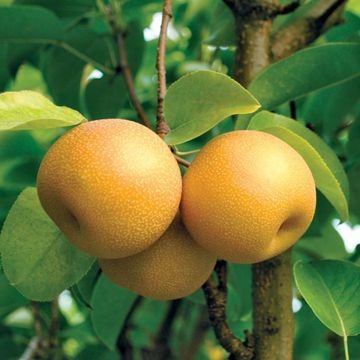
Types of Asian Pear Tree
Fall is an opportune time to embark on planting Asian pear trees. You can acquire these trees from local nurseries or conveniently order them online from reputable sources such as justfruitsandexotics.com, johnsonnursery.com, petalsfromthepast.com, and starkbros.com. When selecting a pear tree, it’s important to consider the desired size, which varies depending on the rootstock used: standard (reaching at least 20 feet in height), semi-dwarf (12-15 feet tall), or dwarf (10 feet tall). However, it’s worth noting that some trees labeled as dwarf are actually semi-dwarf, so carefully read the provided information. Here are a few popular disease-resistant varieties suitable for cultivation in the southern regions:
Shinko: This variety features medium-to-large-sized brown fruit that ripens from late July to mid-August. It exhibits high resistance to fire blight, a common pear tree disease.
Korean Giant: Known for its brownish olive green fruit, this variety produces large to very large pears that can weigh up to a pound. It ripens from late August to mid- to late-September and also showcases high resistance to fire blight.
Ya Li: With its classic yellow-green pear color, ‘Ya Li’ ripens in September. It exhibits moderate resistance to fire blight and has a low chill requirement, making it well-suited for cultivation in southern regions.
Chojuro: This variety boasts a golden-brown skin and is particularly notable for its butterscotch flavor. Its fruit ripens in August, and it demonstrates some resistance to fire blight.
These are just a few examples of disease-resistant Asian pear varieties suitable for growing in the southern regions. However, there are numerous other varieties available, each with its unique flavor profile, appearance, and ripening period. When selecting Asian pear trees, consider your specific preferences, local climate conditions, and the availability of disease-resistant options to ensure a successful and fruitful harvest.

Pruning Strategies for Healthy Asian Pear Trees
Asian pear trees have the potential to reach heights of up to 30 feet, depending on the rootstock used. To manage their size and promote optimal growth, it is advisable to perform pruning in late winter. This light trimming helps control their height and shape. Additionally, Asian pear trees can be trained as espaliers against walls or onto wire trellises, offering further versatility in their pruning approach. Regular pruning, conducted during the dormant period, is essential for maintaining tree vigor and maximizing fruit production.
Initial Pruning Steps
Begin the pruning process by eliminating any broken, diseased, weak, or narrow-angled branches. Using sharp and sterile pruners, make downward-slanting cuts approximately 1/4 inch away from the trunk. It is generally recommended to establish a central leader, which refers to an upright stem allowed to grow upward and develop into the main trunk. Ensuring that branches have at least 2 feet of vertical space between them is beneficial. When selecting branches to retain, prioritize those that exhibit more horizontal growth rather than vertical growth.
Thinning Fruit and Harvesting
In cases where the tree bears a heavy crop load, thinning the fruit becomes necessary. Thinning should be done when the fruit reaches a size between that of a nickel and a quarter. Leave the pears in clusters of two, spacing them approximately 4-6 inches apart. Unlike soft European pears, firm Asian pears should be left on the tree to ripen fully before picking. As the fruit matures, its color develops, and a few pears may naturally fall from the tree. This indicates their readiness for harvesting. For extended storage, the fruit can last three to four months when placed in the crisper section of a refrigerator.
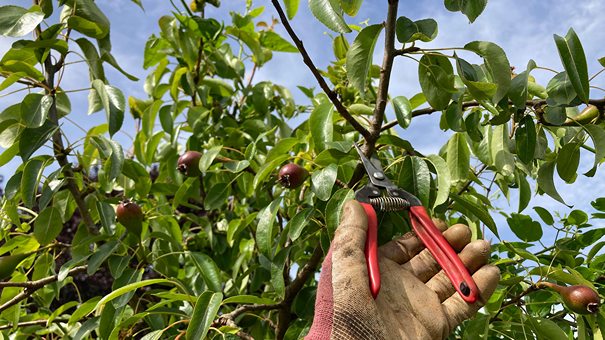
Propagation Techniques
Asian pear trees are commonly propagated through grafting, a process that involves combining the desired pear variety (scion) with the rootstock of another species. This grafting method serves multiple purposes, including controlling the tree’s size, enhancing its resistance to diseases and pests, and influencing its ability to withstand cold temperatures and adapt to different soil types. As a result, it is advisable to obtain Asian pear trees from reputable commercial growers who specialize in grafting techniques.
1. Grafting as a Propagation Method
The practice of grafting allows growers to select specific pear varieties known for their desirable characteristics, such as flavor, texture, and fruiting habits. By joining the scion (the upper part of the desired variety) with a compatible rootstock, the resulting Asian pear tree inherits the favorable traits of both the scion and the rootstock. This enables growers to control the tree’s overall size, making it more manageable for home gardens or orchards.
2. Benefits of Commercially Grafted Trees
Obtaining Asian pear trees from reputable commercial growers ensures the reliability and consistency of the desired variety. Professional growers have the expertise and experience to select appropriate rootstocks that impart beneficial traits to the scion. These traits may include increased disease resistance, tolerance to specific soil conditions, improved cold hardiness, and enhanced overall vigor. By purchasing trees from reliable sources, you can have confidence in the quality and performance of the selected Asian pear variety.
3. Considerations for Home Propagation
While it is possible to propagate Asian pear trees through other methods such as budding or air layering, these techniques require a higher level of skill and knowledge. Home gardeners who wish to propagate Asian pears may find it more convenient and reliable to purchase grafted trees from commercial nurseries. This ensures that the tree has been established using proper grafting techniques and provides the best chance of success in terms of tree health, growth, and fruit production.
4. Selecting the Right Asian Pear Tree
When choosing an Asian pear variety for purchase, consider factors such as local climate, disease prevalence in your region, and personal preferences for fruit characteristics (e.g., flavor, size, ripening time). Reputable nurseries offer a wide selection of Asian pear varieties suitable for different growing conditions and purposes. By consulting with knowledgeable nursery staff or referring to reliable gardening resources, you can make an informed decision and select an Asian pear tree that is well-suited to your specific needs.
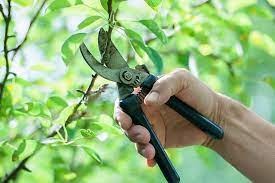
Pest and Disease Management
Asian pear trees, like many fruit-bearing plants, are susceptible to certain pests and diseases that can affect their health and productivity. Recognizing common issues and implementing appropriate control measures is crucial for safeguarding your trees. By following recommended practices, you can mitigate the impact of pests and diseases on your Asian pear trees.
Fire Blight
Significant Concern One of the most prevalent diseases affecting Asian pear trees is fire blight. This bacterial infection typically occurs during warm weather when bacteria enter the tree through wounds. These wounds can result from wind damage, hail, pruning cuts, or insect activity. Symptoms include the presence of oozing cankers on the tree’s bark, scorched-looking leaves and shoots, and darkened, shriveled fruit. If the infection reaches the trunk, it can ultimately lead to the demise of the tree.
Preventive and Remedial Measures
In regions prone to fire blight, selecting fire-blight-resistant Asian pear varieties is highly recommended. Additionally, proper pruning practices play a crucial role in disease management. In late winter, remove diseased twigs and branches by making clean cuts 4-8 inches beyond the affected areas. To prevent spreading the infection, sterilize pruning tools with a 10-percent bleach solution after each cut. During spring, avoid applying high-nitrogen fertilizers or excessive watering, as these practices promote new growth, which is particularly susceptible to bacterial attack.
Leafspot and Fungal Infections
Another common issue for Asian pear trees is leafspot, which manifests as small purplish-brown spots on leaves and fruit. Promptly remove and dispose of any infected plant material in the trash rather than the compost pile. While fungicides may not always be effective, seeking advice from your local extension office can provide valuable guidance for addressing leafspot concerns.
Minimal Insect Challenges
In general, Asian pear trees do not face severe insect problems and rarely require extensive spraying. However, some pests may occasionally appear.
- Pear slugs and large insects like Japanese beetles can be manually removed by handpicking and dropping them into a container filled with soapy water.
- The pear psylla, an orangey-brown, winged, jumping insect that feeds on sap, can leave behind a residue that promotes sooty mold growth. Control pear psylla populations by employing insecticidal soap.
- Soft-bodied aphids often gather on the undersides of leaves. You can dislodge them with a strong stream of water or use insecticidal soap to manage their presence.
- For caterpillar infestations, consider using Bacillus thuringiensis (Bt), a natural and environmentally friendly microbial pesticide.
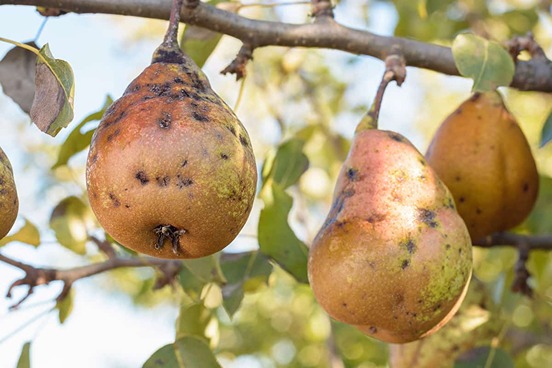
Enhancing Flowering in Asian Pear Trees
If your Asian pear tree is not blooming as expected, several factors may be influencing its flowering. By addressing these factors and implementing appropriate techniques, you can encourage your tree to produce abundant blooms and ultimately, a fruitful harvest.
1. Sun Exposure and Tree Health:
Insufficient sun exposure or poor tree health can contribute to a lack of blooming. Asian pear trees require an adequate amount of direct sunlight to stimulate flower bud formation. Evaluate the positioning of your tree to ensure it receives at least six to eight hours of sunlight each day. Additionally, ensure that the tree is in good health, as diseases or nutrient deficiencies can hinder blooming.
2. Weather and Frost Damage:
Late frost can prove detrimental to flower buds, resulting in reduced or no blooming. Unfortunately, weather conditions are beyond our control. If you suspect that frost has damaged the flower buds, observe the tree closely for any signs of bud damage or loss. In such cases, it may take another season for the tree to recover and resume blooming.
3. Chill Hours and Winter Conditions:
Asian pear trees require a specific number of chill hours, which refers to the total hours during winter when the temperature drops below 45 degrees Fahrenheit. Insufficient chill hours, especially in mild winters, can affect flowering. Ensure that your region provides the necessary chill hours for the specific Asian pear variety you have planted. Some varieties require more chill hours than others.
4. Establishment Period and Pruning:
Asian pear trees often require two to three years to establish themselves after planting before they start blooming and bearing fruit. During this establishment period, the tree allocates resources to develop a robust root system and establish its overall health. Patience is key during this phase.
Annual pruning during the winter months is crucial to promote blooming. Proper pruning techniques, such as removing dead or weak branches, help stimulate new growth and encourage the formation of flower buds. Seek guidance on appropriate pruning practices for Asian pear trees, ensuring that you follow recommended procedures.
5. Improving Light Exposure and Tree Health
If your tree lacks sufficient light exposure, consider pruning neighboring trees or structures that may be casting shade. Increased sunlight penetration can positively impact blooming. Additionally, take steps to enhance the overall health of your tree. This includes regular watering, proper fertilization based on soil testing results, and addressing any signs of pests or diseases promptly.
6. Caution with Nitrogen Fertilizers
When fertilizing your Asian pear tree, exercise caution with high nitrogen fertilizers unless soil testing indicates a specific need. Excessive nitrogen can lead to excessive vegetative growth at the expense of flower formation. Balancing nutrient levels based on soil test recommendations ensures that your tree receives the appropriate nutrients for optimal growth and flowering.

